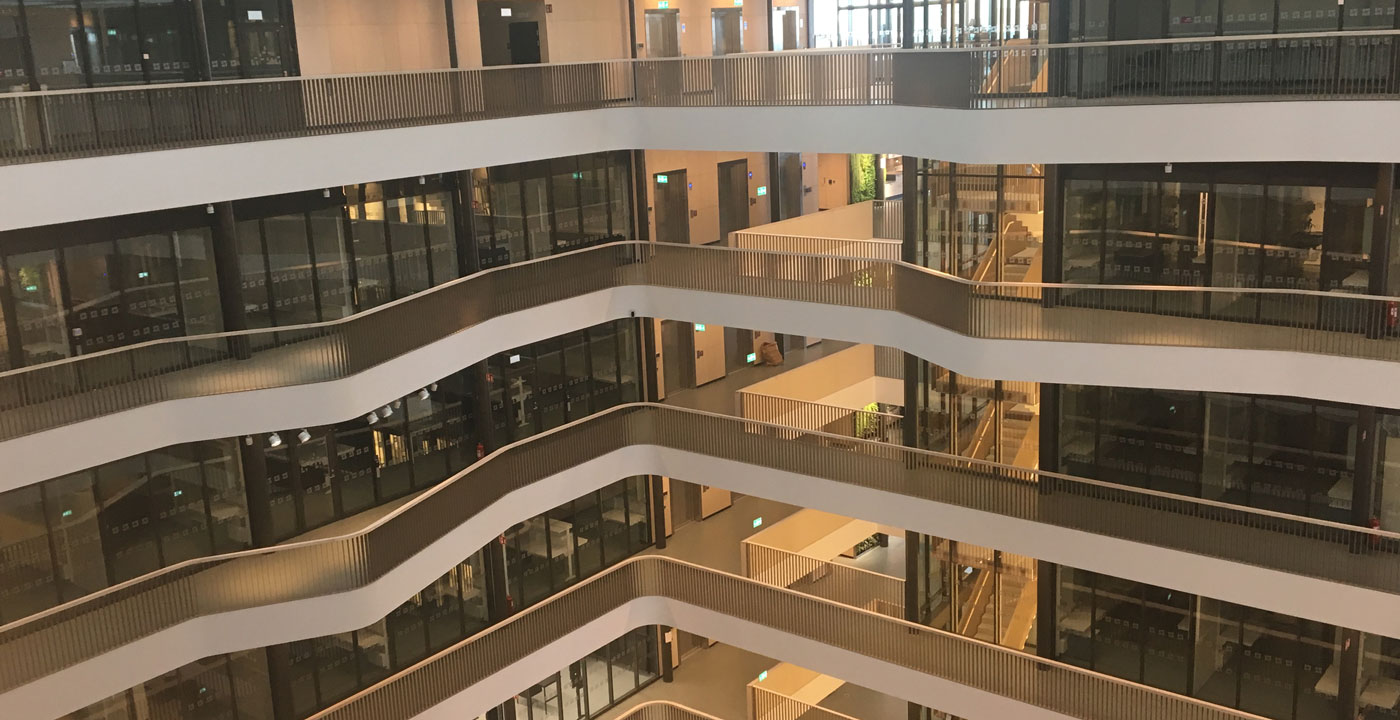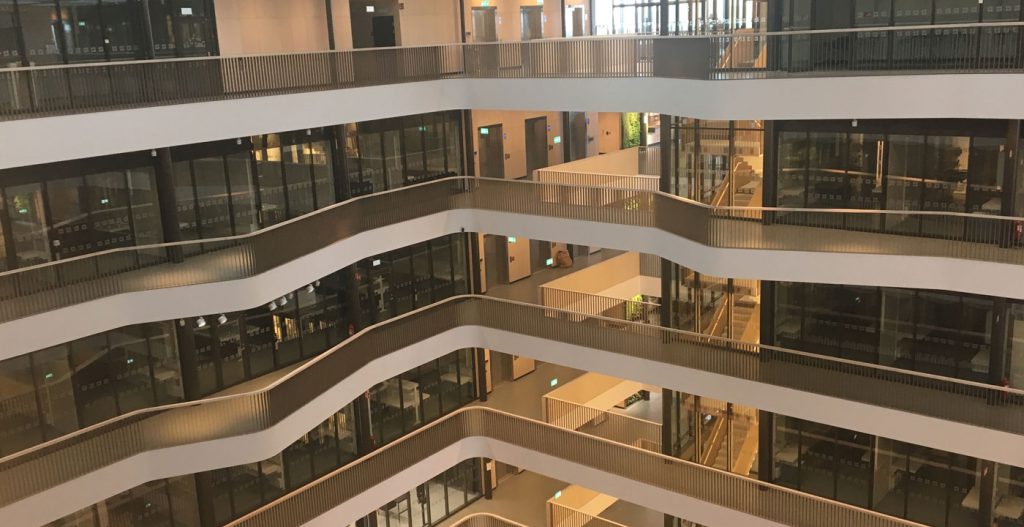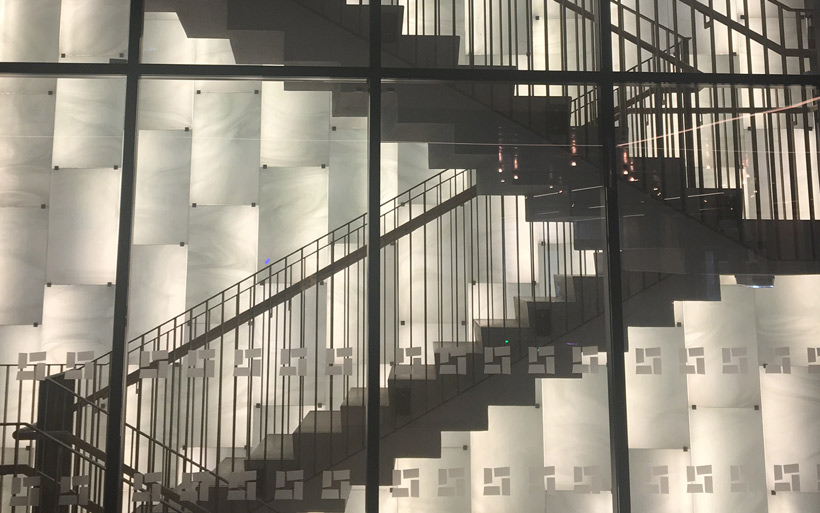Growing Panes – The Dangers of Underspecified Fire Glass
Fire glass technology has come a long way over the past decade. The confusion over the various types of glass available has led to many projects being underspecified. Andy Lake, UK Projects Director for fire glass specialist, Pyroguard, outlines the key differences and explains why you should be looking to more resilient options.

The evolution of fire glass has been stark over recent years. From somewhat humble beginnings with the invention of embedded-wire glazing, the industry has matured to offer a range of high performance and versatile solutions.
While this new technology has brought about exciting and ground breaking possibilities when it comes to fire protection, the rapid and complex nature of these changes has left some room for confusion. For the unsuspecting specifier, building contractor or installer, it can be hard to keep up with the many options available, making selecting the most suitable a difficult task.
This can, of course, cause all sorts of issues when it comes to budgeting and maintenance, but the implications go beyond this. Indeed, there seems to be a worrying increase in the number of buildings which have been under specified, and equipped with products which are unsuitable (and thus unsafe) for their intended purpose. In the wake of the Grenfell tragedy last year, it’s imperative for building owners and facility managers to assess the products installed, and make replacements where necessary to mitigate risk.
A base layer of protection
Of the three main categories of fire glass suitable for modern building applications, laminated fire glass is perhaps the most common. Made by bonding a layer of float glass with a reactive glass interlayer, these products provide a high-performing, stable surface which is suitable for use in certain fire applications.
The principle advantages of laminated fire glass are its flexibility, price and lead time. Because it can be manufactured as a stock sheet, this glass can be held locally by approved stock holders and cut to order. This effectively makes for a high performing fire glass which is available off the shelf.
However, far being a one-size-fits-all solution, fire-rated laminated glass has its limitations. As most people reading this will know, fire glass is categorised under European and UK standards to assist decision makers in selecting the product that will perform most effectively within the confines and requirements of their construction or refurbishment project. These categories are E (integrity – protection against flames and smoke only), EW (integrity and radiation – radiant heat transfer under 15 kW/m² on the unexposed side) and EI (integrity and insulation – highest level of protection from flames, smoke and heat).
Although fire-rated laminated glass predominantly offers both E and EW performance, by adding additional intumescent interlayers, it will achieve EI30 and EI60 performance. For increased protection times and larger sizes, specifiers should look towards glass which has also been toughened in order to deliver higher product performance levels. Let us look at toughened glass alternatives in more detail:
Looking to tougher alternatives
When it comes to guaranteeing compliance and peace of mind, the best solution we can recommend is to choose a glass which has been toughened in order to offer added protection. The first type of product that fits this criteria is helpfully called toughened (or modified toughened) fire glass. Composed of a single layer of float glass, toughened glass is processed with a special heating and cooling process a single piece of modified toughened fire glass withstands higher demands than off-the-shelf laminated options. Specifically, this can achieve classifications as high as EW60 (radiation control for up to 60 minutes), offering reassurance when it comes to ensuring fire protection.
Other benefits provide further food for thought. Toughened glass also carries an incredible strength-to-weight ratio, achieving the highest impact classification of 1C1 when tested to the BS EN 12600 pendulum test. This makes for a very versatile and economical way of meeting the requirements of fire barriers in budget conscious projects, for example.
More recently, these advantages have been taken one step further with the development of insulated fire glass, a type of toughened glass which has also been laminated. Manufacturing glass in this way offers advantages over and above products which have been made with a single process, and provides more control over the specific properties the glass will carry. In terms of fire protection, adding reactive, intumescent interlayers can provide radiation control of up to 120 minutes in glass as thin as 13mm. Alternatively, constructing glass from multiple layers and cavities can offer a spectrum of fire resistant classifications, from the base E30 through to EI120 at a total product thickness of only 47mm. Manufacturers are already taking this one step further with the recent development of EI180 glass, capable of providing full fire heat insulation for three hours within a suitable framing system.
The advantages are not limited to fire protection, either; the variety of modern manufacturing options available means decision-makers are able to choose materials which will suit the specific requirements of the environment at hand. When it comes to security, for instance, the inclusion of a PVB interlayer will provide a higher level of defence against physical attacks in buildings such as financial institutions, medical centres or detention facilities. In addition, this method of manufacture means that fully-tested areas of up to 2845mm x 3120mm are possible – providing an easy way to satisfy the desire for clean lines and visibility. Admittedly, there are certain drawbacks involved in specifying toughened or insulated glass. Due to the processes involved, these areas must be manufactured to size and cannot be modified retrospectively. But, for the discerning specifier, the superior safety properties and performance on offer should more than outweigh the need to plan ahead.
The fire glass industry is changing all the time. New, specialist glass types are continually pushing the boundaries of what is possible, not only achieving a level of fire protection unimaginable a few decades ago, but much more besides. As such, while it is useful to have a selection of entry-level products to hand, it pays to remember that there are a number of sophisticated options available to help make every project safer and more successful. As with any technical building material, engaging the services of technical experts is imperative for best practice and to ensure the correct project specification. Leading manufacturers offer teams of such experts to assist decision makers with understanding how best to meet the performance criteria which is relevant to their construction project, within the budget available.
For further information on Pyroguard’s toughened range of fire rated safety glass or for technical support please contact us.

